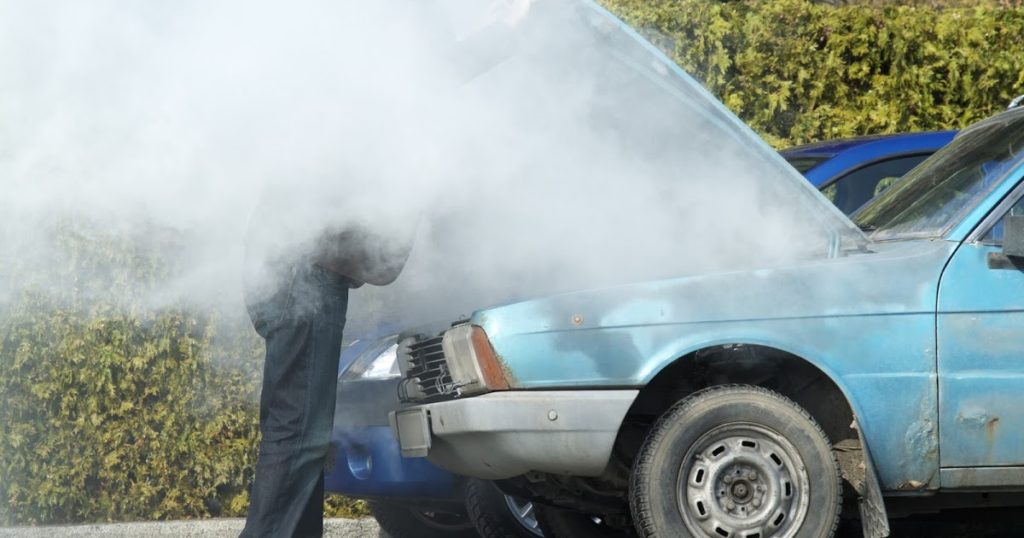News
Overheating: Causes and Some Likely Solutions
Published
8 years agoon
It’s the worst feeling you can have as a driver: the indisputable fact that something is wrong. Steam spews from under the hood while warning bells chime and lights flash from your dashboard. Your engine is too hot, and you’ve got to pull over to the nearest parking lot or onto the road shoulder to let the engine cool down. There’s a knot in your stomach – this could be expensive.
Heat is an engine’s enemy. The damage caused by overheating can be catastrophic and require a complete overhaul or replacement if the problem is not caught in time. There are many conditions that can cause overheating, with some being straightforward repairs and others requiring long hours of work and high parts costs.
What is overheating?
An engine operates efficiently at a certain temperature. That temperature, even though it is too hot to touch by hand, is significantly cooler than it would be without a cooling system. Overheating is when the temperature of the engine climbs to a point where mechanical damage can occur. Usually, a sustained temperature of over 240 degrees Fahrenheit is enough to cause concern. Steam coming from the engine area, a temperature gauge spiking to the red zone, and engine warning lights – often shaped like a thermometer – are signs your vehicle may be overheating.
Does my car have a cooling system?
No matter how big or small it is, every engine has a cooling system. Very early on in vehicle development, car engines were air-cooled. Essentially, exposure to the air passing over it dissipated the heat from the engine. As engines became more sophisticated and powerful, instances of overheating became more frequent, and a liquid-based cooling system was developed in response.
Liquid cooling systems are used almost exclusively in today’s automotive design and development. Your modern vehicle is equipped with a cooling system that circulates coolant (also known as antifreeze) throughout the engine and through a radiator to dissipate the heat.
How does it work?
- There are many parts to a cooling system in an engine. There is a water pump, a thermostat, a heater core, a radiator, coolant hoses, and the engine itself. Here’s how it works:
- The water pump has an impeller that circulates the coolant. The impeller looks like a fan or windmill and is turned by the serpentine belt, or timing belt or chain.
- The coolant flows through the engine’s coolant jacket, which is a labyrinth of channels through the engine block. Heat is absorbed by the coolant and carried out of the engine and into the heater core.
- The heater core is a small radiator inside your vehicle to warm up the interior. A valve controls how much hot coolant passes through the heater core to warm the air temperature inside. The coolant then passes through a hose toward the radiator.
- The radiator is essentially a long tube that is bent into shorter coils. The air passing through the coils disperses the heat from the coolant inside, reducing the temperature of the coolant. After passing through the radiator, a hose carries the cooled fluid back to the water pump, and the cycle starts over.
Why engine overheats
There are several causes of overheating. Almost all stem from a lack of circulation but can be caused in different ways.
- Cooling system leaks – A leak in the cooling system doesn’t directly cause the engine to overheat. The direct cause is air entering the cooling system. When a leak is present, the coolant level drops and the air is sucked in and circulated. Air is obviously lighter than coolant, and once it rises to the top of the cooling system, it causes what is known as an airlock. An airlock is a large bubble that can’t be pushed through the cooling system by the coolant flow. That means that cooling system effectively stops circulating and the coolant remaining inside the engine becomes superheated.
- Blockage – A blockage in the cooling system is another indirect cause, as overheating is actually due to a lack of coolant circulation inside the engine. When the cooling system is blocked, and the coolant can’t circulate to the radiator to disperse heat, the engine overheats. A few common of obstructions are:
- A thermostat that doesn’t open when it should.
- A mineral deposit was blocking the radiator.
- A foreign object inside the cooling system.
- Failed water pump – A water pump failure is one of the more regular causes for overheating.
The water pump is the most active component in the cooling system and is responsible for maintaining coolant circulation. Over time, the bearing or impeller inside the water pump can wear or break, and the impeller will no longer turn. When this occurs, it’s usually a short time until the engine overheats.
The coolant isn’t concentrated enough – This condition is primarily a concern in cold weather climates where temperatures drop below freezing. The coolant can gel up inside the engine or radiator and cause a blockage. Even in freezing cold, an engine will readily overheat if the antifreeze has gelled and cannot circulate. It can cause internal damage in components that will require attention, like a possible radiator repair.
A lesser known system that assists in cooling the engine is the engine oil itself. It plays a large part in engine cooling and also in preventing excessive temperatures from building up. The engine oil lubricates internal engine parts to prevent friction, which is the main cause of heat inside an engine.
Many manufacturers have incorporated an engine oil cooler into their vehicles which operate as a radiator. The hot oil is circulated to the oil cooler where heat dissipates before it returns to the engine. Up to forty percent of the engine’s cooling is performed by the engine oil.
Common repairs required to correct overheating
- Water pump replacement
- Radiator repair or replacement
- Antifreeze flush
- Thermostat replacement
- Engine oil top-up or change
- Coolant hose replacement
- How to prevent overheating
There are several ways to combat overheating in your vehicle.
- Have the cooling system flushed at the manufacturer’s recommended interval or when it is dirty.
- Have a technician repair coolant leaks as soon as they appear.
- Get your engine oil changed regularly.
- Monitor the temperature gauge on your dash. If the needle goes into the red or an “engine hot” warning light comes on, pull over and turn your vehicle off to prevent damage.
Don’t take chances with your vehicle if it starts to overheat. If your car overheats even once, something is wrong and needs to be fixed. Contact a certified mobile technician to inspect what’s causing it to overheat.
AutoReportNG is your one-stop place for quality news on roads, cars, and anything pertaining to mobility. We keep track of all current news in road, rails, and aviation. We are known to true, factual and investigative news.

You may like
-


Checkout YangWang U9, A $145,000 Electric Supercar From China That Hits 60 In 2.0 Sec
-


Best API To Get Information About Cars
-


FRSC Commits To Prompt Removal Of Abandoned, Broken Down Vehicles
-


Federal High Court Orders Interim Forfeiture Of Two Houses, Cars Linked To Invictus Obi
-


Innoson Unveils Manufacturing Plants, Automated Robotic Spraying Booth in Nnewi
-


Four Die In Ebonyi Auto Crash


You must be logged in to post a comment Login